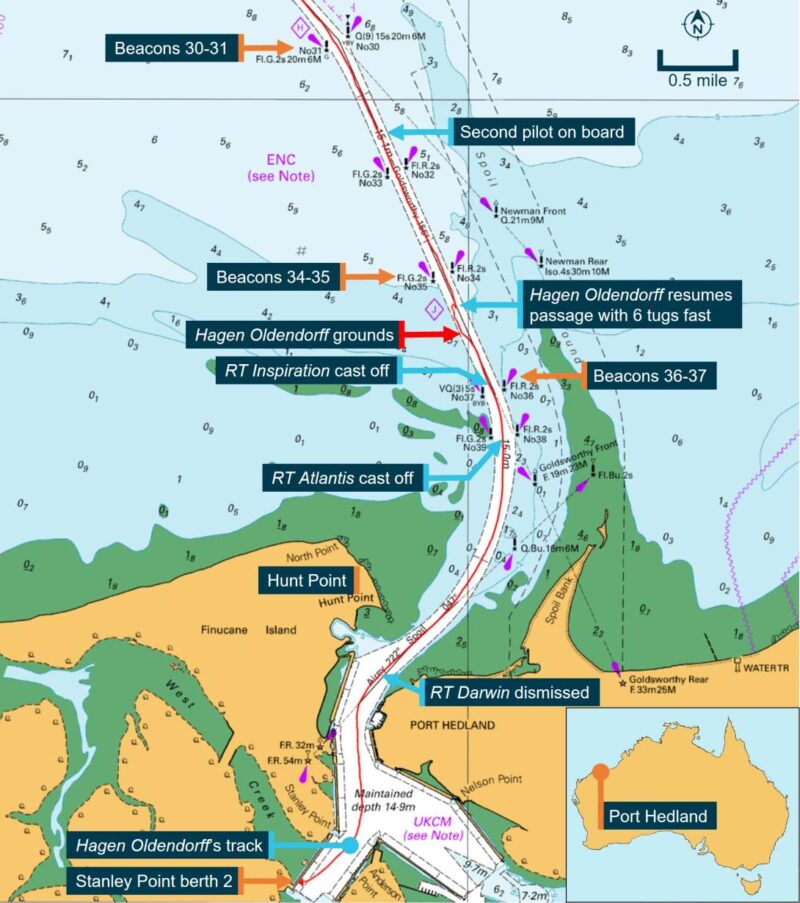Engine Room Fire on Containership Injures Four at Port of Wilmington
Firefighters were called to the Port of Wilmington on Wednesday morning after flames erupted in the engine room of a docked vessel. The emergency call came in at 9:28 a.m....
A routine departure from Port Hedland, Western Australia, turned into a serious maritime incident when the Liberian-flagged bulk carrier Hagen Oldendorff grounded in the port’s channel following an electrical failure.
The incident, which occurred on April 9, 2022, began when an electrical short circuit disabled all of the vessel’s analogue rudder angle indicators, the Australian Transport Safety Bureau (ATSB) reported on Friday. The bridge team, mistakenly believing they had lost steering capability, initiated emergency procedures that resulted in an uncontrolled turn and subsequent collision with the channel wall at 6.1 knots.
The impact caused substantial damage to two double-bottom water ballast tanks, requiring extensive repairs, though fortunately no injuries or pollution were reported.
The below sequence highlights the critical moments and actions taken as the crew and pilot attempted to mitigate the developing emergency before the Hagen Oldendorff grounded.

“Port Hedland is the largest bulk export port in the world, and a grounding in the channel could have significant outcomes not only for the environment and for the safety of those on board, but also for the Australian economy,” said ATSB Chief Commissioner Angus Mitchell.
The investigation revealed a critical safety issue: while the vessel’s rudder angle indicators met all current international regulations and classification rules, these standards don’t require protection against single-point failures or mandate warning systems for power loss.
In response, the ATSB has issued safety recommendations to multiple maritime authorities, including the Liberia Maritime Authority, Lloyd’s Register, and the Australian Maritime Safety Authority.
The incident also exposed issues with tug procedures, leading to updated guidelines for Port Hedland’s towage operations. The port has since implemented new procedures for tug retention and utilization, with pilots now required to keep forward tugs fast during critical channel sections.

Sign up for gCaptain’s newsletter and never miss an update

Subscribe to gCaptain Daily and stay informed with the latest global maritime and offshore news
Essential news coupled with the finest maritime content sourced from across the globe.
Sign Up